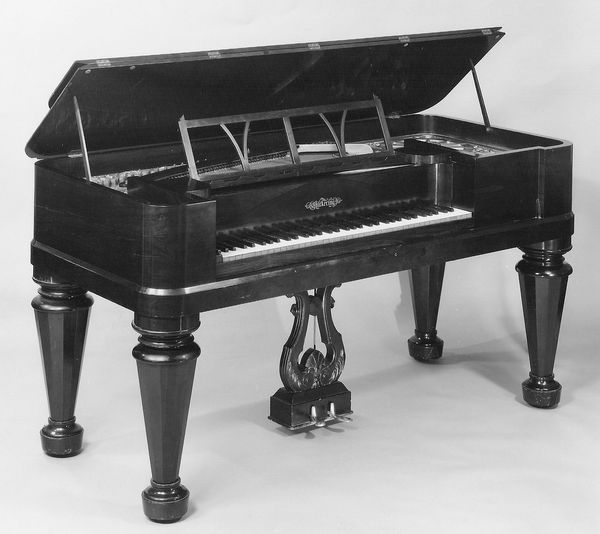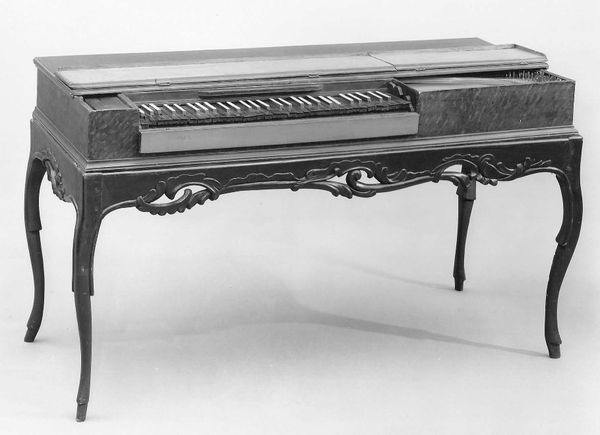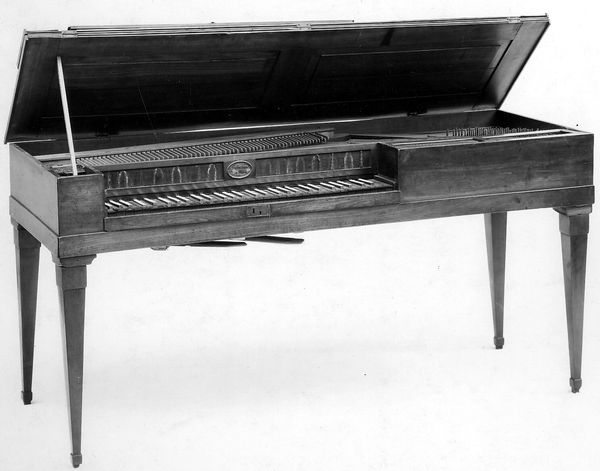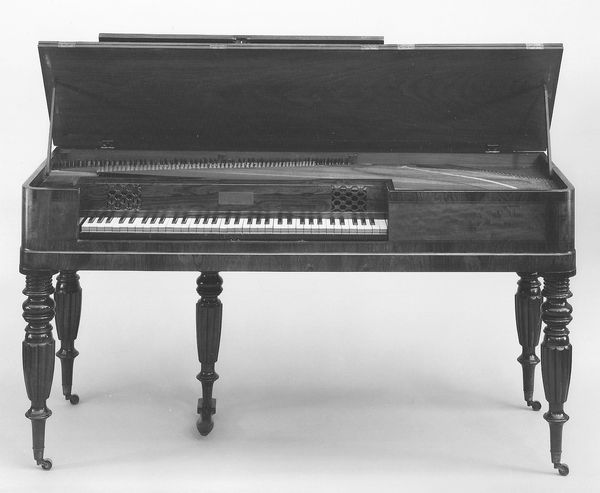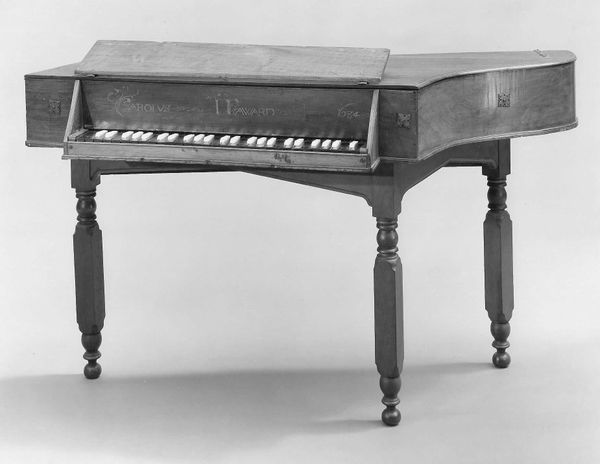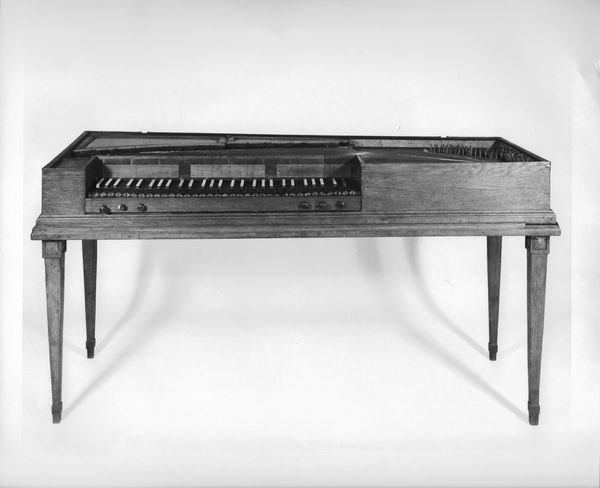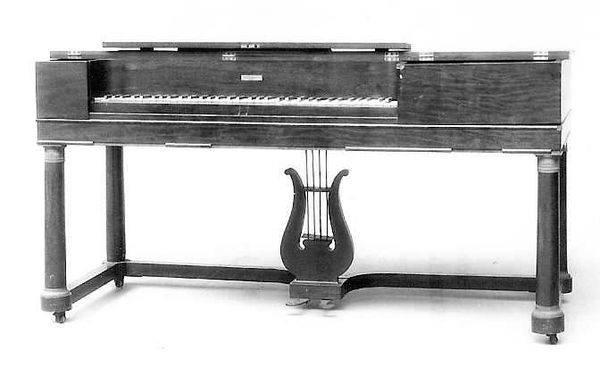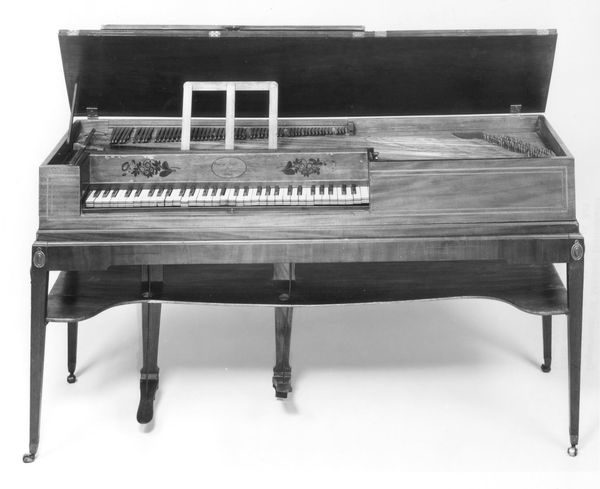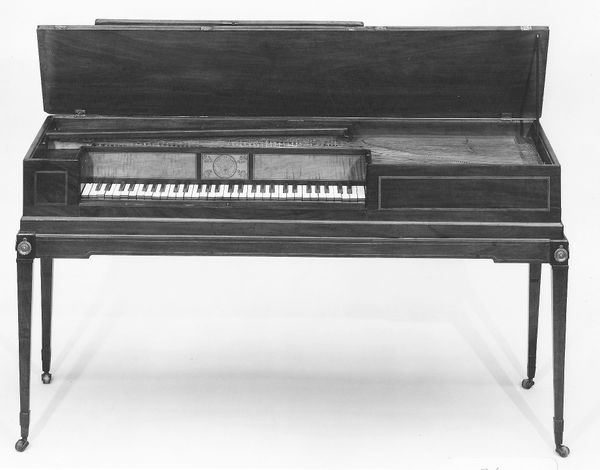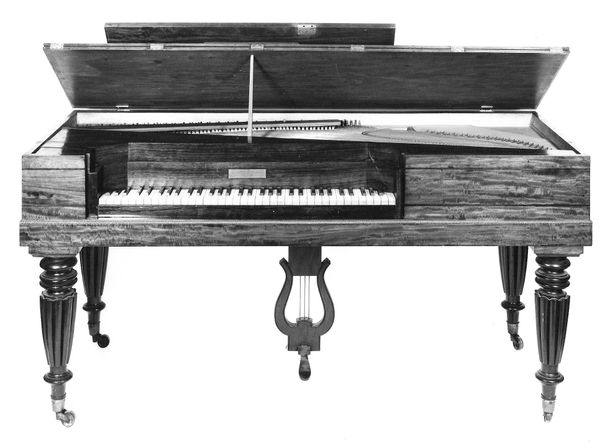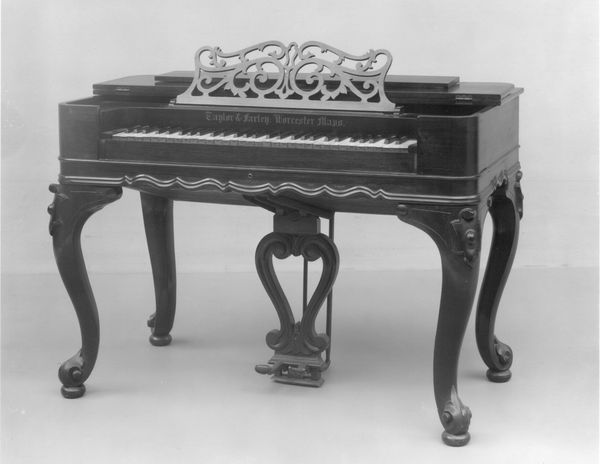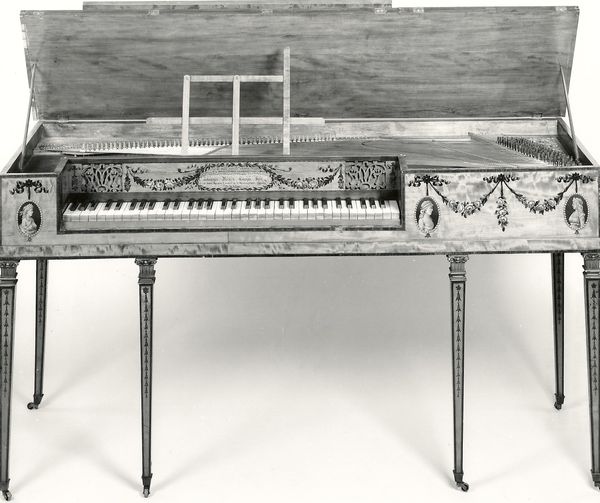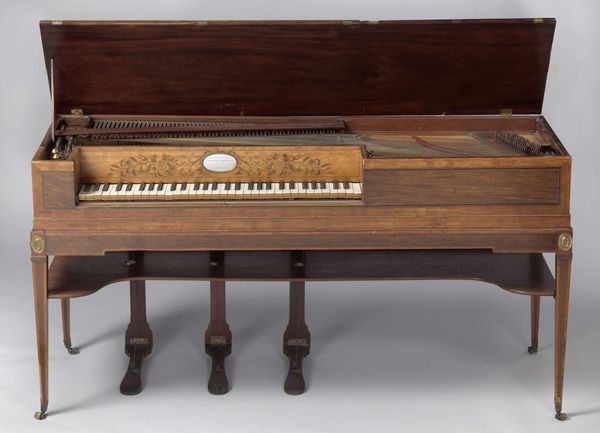
wood
#
sculpture
#
wood
#
musical-instrument
Dimensions: Overall: 82.5 x 111 x 42.3cm (32 1/2 x 43 11/16 x 16 5/8in.)
Copyright: Public Domain
Editor: Here we have Johann Matthäus Schmahl’s Square Piano, made around 1790. It's made of wood and is quite compact. I am fascinated by the visible mechanism, the hammers and dampers. What can you tell me about it? Curator: Looking at this piece materially, we see a fusion of art and industry. The use of wood, likely sourced locally to Schmahl, tells a story of craftsmanship embedded within a specific geographical and economic context. The very creation of a square piano democratized music-making; consider how its smaller size and relatively lower cost, compared to grand pianos, opened up new markets. Who could now own one? Editor: So, this was a response to market demands? Curator: Absolutely! The industrial revolution impacted instrument making, standardizing certain elements but, crucially, this example retains that hand-made feel. Trace the lineage of labor involved: from the logger who felled the trees, to the artisans shaping the wood, to the performer playing compositions meant for more intimate settings. Do you see those points of connection and tension? Editor: Yes, it's less about some genius and more about the process. The access... I hadn't thought about it that way before. Curator: Exactly. And consider where this object eventually lived, and who played it, in order to complete its own historical footprint, not just what famous composer may have composed for its specific dimensions. Editor: It's fascinating to realize how an instrument can embody a shift in society’s means and dynamics of production. Thank you! Curator: Indeed, a material examination provides us a new appreciation.
Comments
No comments
Be the first to comment and join the conversation on the ultimate creative platform.
